5 tips for using the BIOS to help you master your computer
Most computer users often don't care much about the BIOS. However, when the problem occurs, you need to tweak a setting and don't know how. You will wonder what the BIOS is? Really need to know about it?
Using a computer while skipping the BIOS is like buying a TV without accessing the menu option or installing a new router without having to visit the settings page. Most 99% of the time you don't need it, but when it comes to using it, having some basic knowledge of the BIOS will help you a lot. Fortunately, the BIOS is not complicated, in fact it is quite easy.
What is the BIOS?
BIOS, short for Basic Input / Output System, is the first software to run when starting the computer. It is stored in a special part of the motherboard, which means it will run before detecting any other hardware components, including the hard drive.
The BIOS ensures that all connected hardware components are active and able to run diagnostict tests to help overcome hardware problems. Without any problems, it will start loading the operating system.
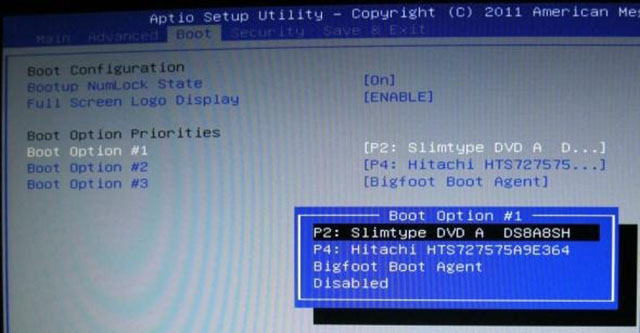 5 tips for using the BIOS to help you master your computer Picture 1
5 tips for using the BIOS to help you master your computer Picture 1
Most BIOSes have a boot sequence in which the computer is configured. This sequence determines the order of devices that the BIOS will check when searching for an operating system. By changing the order, you can boot from devices other than the normal hard drive, such as a USB boot.
The easy way, though somewhat inconvenient, to access the BIOS is to restart the computer. After that, you press the hotkey (hotkey) BIOS appropriate for your system. This hotkey is written in the motherboard manual.
If not found, you can use common BIOS access keys like F1, F2, F10 and DEL. However, it really depends on the manufacturer and model of the computer, so you need to try some keys to find the correct hotkey to access the BIOS on your computer.
- BIOS - Basic information for beginners
- Instructions for entering BIOS on different computers
Difference between BIOS and UEFI
UEFI, short for Unified Extensible Firmware Interface, is the newer firmware inherited from the BIOS, which acts as an interface between hardware components and the operating system. Although it is a replacement, most UEFI configurations that provide Legacy support BIOS.
The most noticeable difference between UEFI and BIOS is graphic display. While operations performed on modern BIOS still depend on ASCII-based display, UEFI uses advanced, attractive and more comfortable graphics to use.
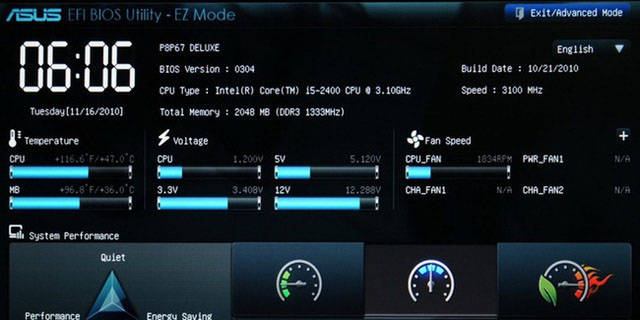 5 tips for using the BIOS to help you master your computer Picture 2
5 tips for using the BIOS to help you master your computer Picture 2
Not only that, you can also use keyboard and mouse with UEFI. Other features include advanced tools for diagnosing and repairing, configuring detailed boot order, faster boot times and improved boot security. Security Boot prevents the system from running malicious code in case UEFI is infected.
In short, you can think of UEFI as a new and improved BIOS version. Starting with Windows 8, the computers that came with Windows were installed with UEFI instead of BIOS.
- Things to note when using UEFI instead of BIOS
5 tips when using the BIOS
Find the BIOS version
There are several ways to find your BIOS version, but the easiest way is to open the Run window (using Windows key + R key combination) and enter msinfo32 . This will open the System Information tool.
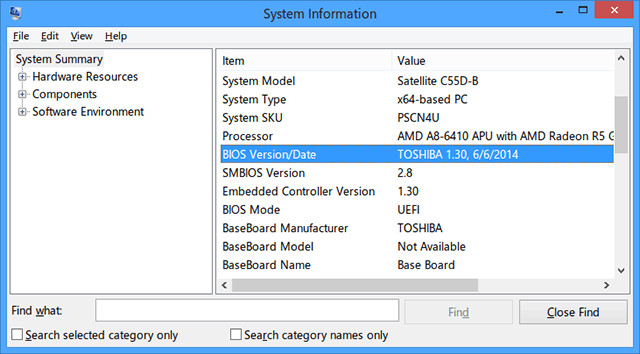 5 tips for using the BIOS to help you master your computer Picture 3
5 tips for using the BIOS to help you master your computer Picture 3
In the System Summary section, scroll down and find the BIOS Version / Date . You will also know about the SMBIOS version whether your computer is operating in BIOS or UEFI mode. Knowing the BIOS version is important when updating BIOS.
Update BIOS
Occasionally, manufacturers will release updates to the BIOS firmware that can fix bugs, improve performance or even add new features. Compare your version with the latest version of the manufacturer (you can find it on their website) and perform a BIOS upgrade if needed.
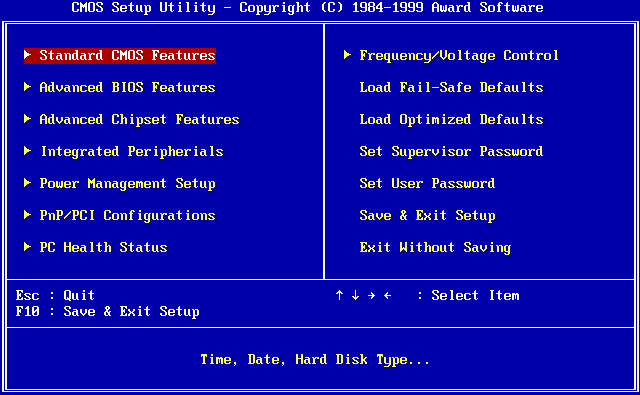 5 tips for using the BIOS to help you master your computer Picture 4
5 tips for using the BIOS to help you master your computer Picture 4
Note: Whenever you update (or "flash") the BIOS, make sure you follow the manufacturer's instructions without any deviations. Because if there are any errors, your system will stop working.
Set up hardware password
If security is a major concern for you, you should consider setting a password to protect the BIOS. This prevents anyone from changing BIOS settings without your permission. You can also set a password on your hard drive via the BIOS.
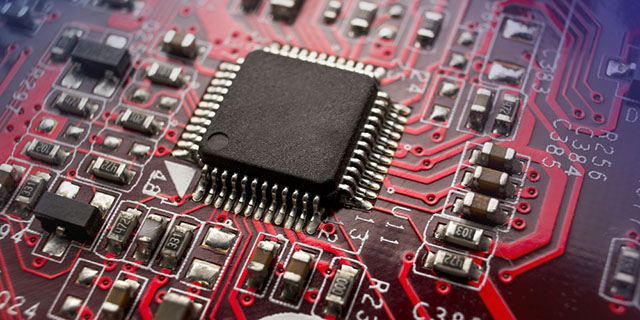 5 tips for using the BIOS to help you master your computer Picture 5
5 tips for using the BIOS to help you master your computer Picture 5
Note: There is no way to recover, reset or delete passwords easily, so just set up a hardware password if you are absolutely sure that this is what you want.
- Reset BIOS password or remove BIOS password with CMOS battery
Power management features
Most modern BIOSes have one or more power management features, usually implemented through CPU scaling (CPU scaling). Each manufacturer often uses different terms like 'CPU Frequency Scaling' or 'Demand-Based Scaling'.
Regardless of what it is called, this feature will change the CPU speed based on the level of processing that needs to be done. For example, if you are playing a game, the CPU will operate at 100%. If you pause, the CPU will decrease accordingly. It is a good way to save power, especially for laptops.
However, if you plan to overclock the CPU, you can skip this feature because it can give unwanted results.
- Instructions for overclocking the CPU
Restore factory settings (factory setting)
If the worst situation occurs, you can restore the BIOS to its default settings. It will be called "Reset to Default" or " Reset to Factory Settings" or something similar depending on the computer manufacturer's terminology used.
 5 tips for using the BIOS to help you master your computer Picture 6
5 tips for using the BIOS to help you master your computer Picture 6
The BIOS is a tool, once you know what it is capable of and how to use it, you'll be able to maximize your computer's performance and more.
You should read it
- Instructions for entering BIOS on different computers
- Differences between UEFI and BIOS
- Set BIOS and UEFI password to protect data on your Windows 10 computer safely
- Instructions for upgrading BIOS
- Things to note when using UEFI instead of BIOS
- Concept of UEFI standard in computers
- How to check a computer using UEFI or BIOS
- Ways to reset BIOS password or remove BIOS password
- How to view the Last BIOS Time index in Windows 10
- How to Reset Your BIOS
- Update the BIOS for the PC motherboard in 5 steps
- How to Enter BIOS
May be interested

Instructions for creating USB Multiboot start multiple operating systems

Create Windows portable, install Windows on USB without software

Reinstalling Windows does not need to format the hard drive

Tips for installing Windows 7 on a new MacBook

Norton Ghost integration on Hiren's Boot disk 13.x

Set up and install Windows 8 on VirtualBox






 5 tips for using BIOS to help you master your computer - What is BIOS and how to use BIOS
5 tips for using BIOS to help you master your computer - What is BIOS and how to use BIOS How to Reset a BIOS Password
How to Reset a BIOS Password Instructions for entering BIOS on different computers
Instructions for entering BIOS on different computers How to convert Legacy BIOS to UEFI in Windows 10
How to convert Legacy BIOS to UEFI in Windows 10 Understanding BIOS: An Indispensable Component of a Computer
Understanding BIOS: An Indispensable Component of a Computer Steps to convert MRB to GPT drive structure in Windows 10
Steps to convert MRB to GPT drive structure in Windows 10